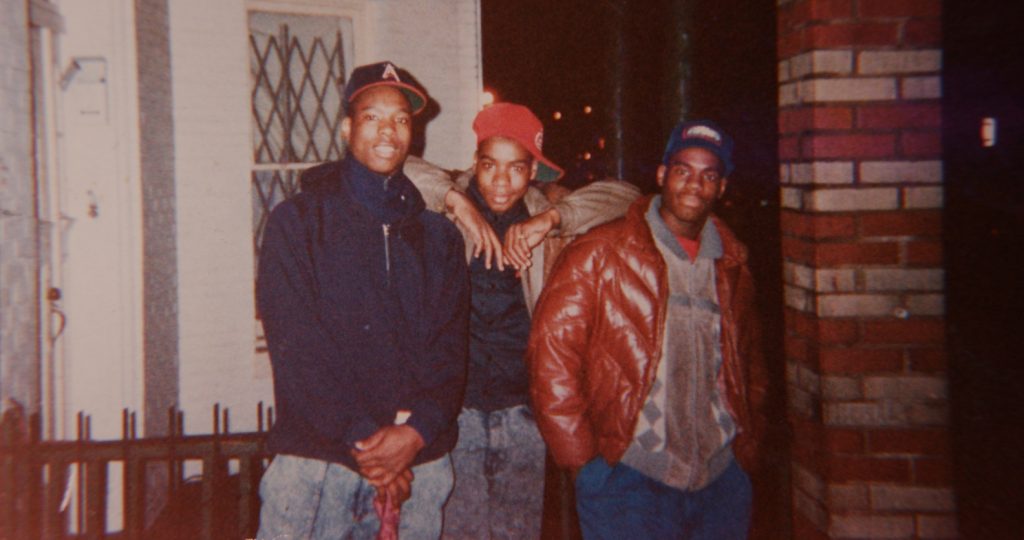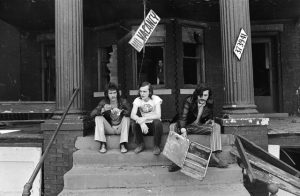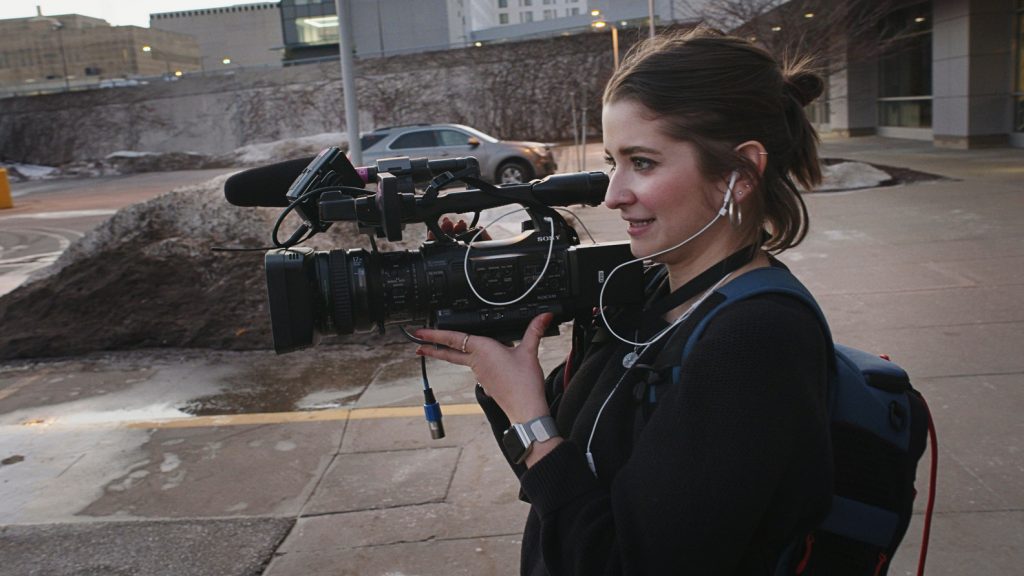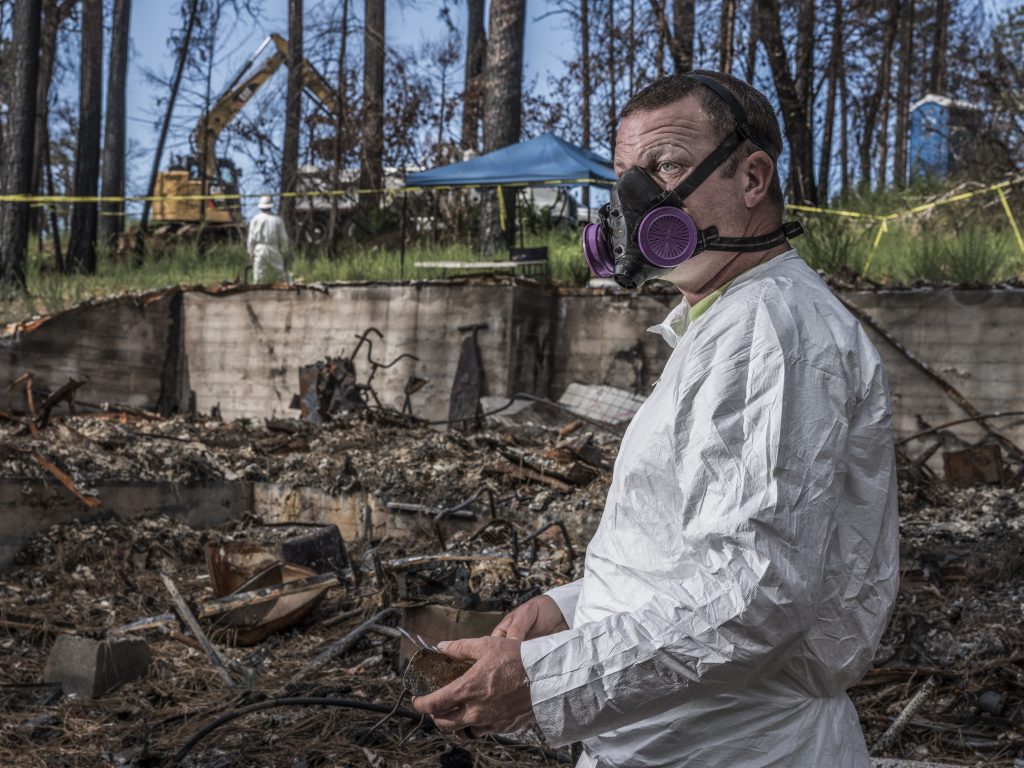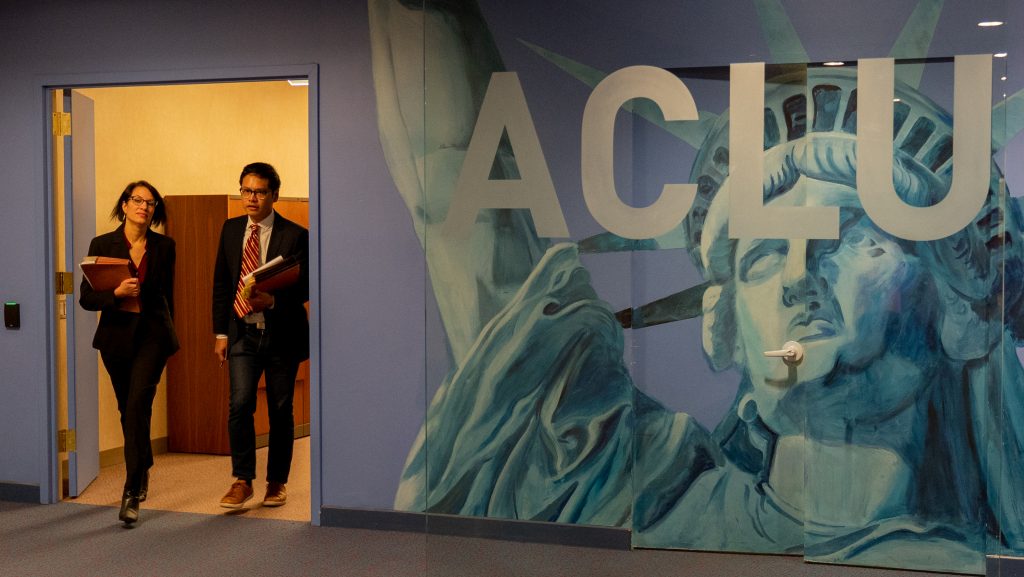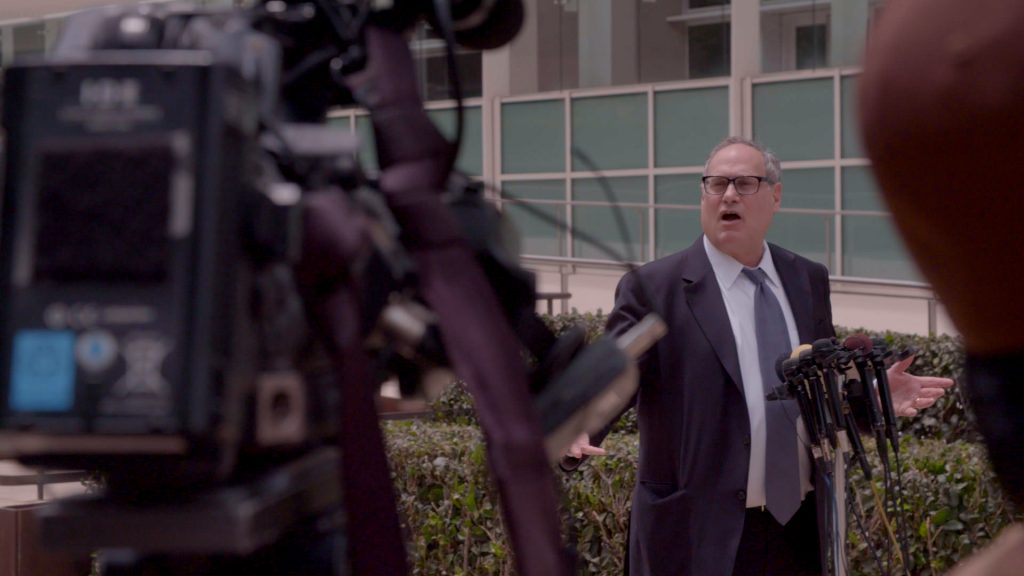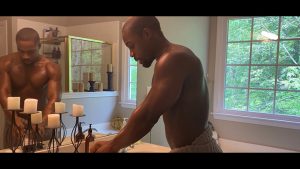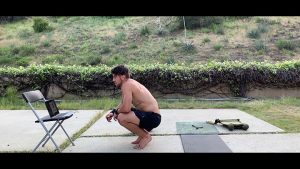August 14, 2020
by Carla Hay
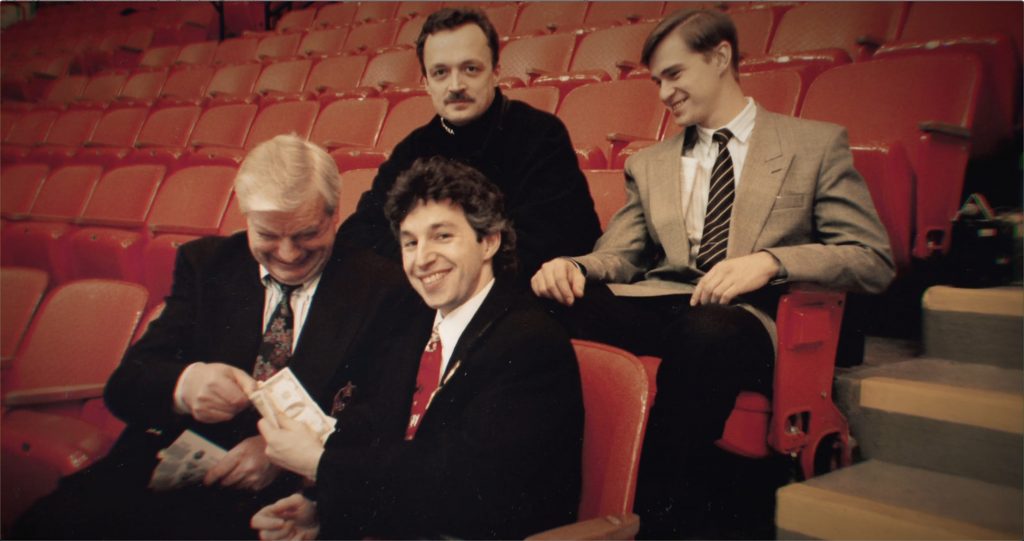
Directed by Gabe Polsky
Some language in Russian with subtitles
Culture Representation: Taking place in Russia and the United States, the documentary “Red Penguins features an all-white group of middle-aged and senior citizen Russian and American men discussing the ill-fated North American partnership with the Russian Penguins hockey team.
Culture Clash: According to the people interviewed in this documentary, the partnership turned into a disaster because of cultural differences, corruption and criminal interference that turned deadly.
Culture Audience: “Red Penguins” will appeal primarily to sports fans and people who like intriguing business stories that take wild and dangerous turns.

The documentary “Red Penguins” (directed by Gabe Polsky) takes viewers on a rowdy and fascinating ride back to the 1990s, when an unlikely business alliance between the Russian Penguins hockey team and a group of North American investors resulted in outrageous promotional stunts, rampant corruption and the involvement of the Russian mafia. And not everyone made it out alive, as some people associated with the team were mysteriously murdered. Several people are interviewed to get their perspectives, but the story is told in a way that it boils down to the conflicts and clashing cultural styles of the Russians and Americans.
After the fall of Communism in Russia (formerly called the Soviet Union), the nation became a marketplace open to capitalism in the beginning of the 1990s. Boris Yeltsin was elected Russia’s first president in 1991. And many American businesses and investors were ready to jump on opportunities to make money in Russia, even though the country was in chaos, including food shortages, civil unrest and infrastructure in a state of disrepair. Two of these business investors were Howard Baldwin and Tom Ruta, who were owners of the Pittsburgh Penguins hockey team at the time.
Baldwin, who also used to be chairman of the Pittsburgh Penguins, was approached with the idea to invest in the Red Army hockey team of Russia. The Red Army team was on the brink of financial disaster. Things were so bad that the team couldn’t afford to buy new uniforms or hockey sticks for the players. And many Russian players were leaving in droves because they were being recruited to play for North American teams in the National Hockey League.
Ruta comments in the documentary about his business relationship with Baldwin when it came to investment ideas: “If I think it’s too crazy, he probably doesn’t do it. If I think it’s a little crazy, we’re probably going to do it.” He adds that aside from making money, one of the reasons they wanted to invest was to help save the legacy of Russian hockey: “We couldn’t believe that one of the greatest hockey teams was on the verge of extinction.”
And so, an unusual alliance was born. The deal was that the Pittsburgh Penguins—along with a group of North American investors that included Canadians such as hockey star Mario Lemieux and actor Michael J. Fox—would invest in the Red Army team (based in Moscow) and split the profits. The Red Army team was then renamed the Russian Penguins. Things were so bare-bones and desperate for the Russian Penguins at the time that the team couldn’t afford to hire a marketing firm to design a new team logo, so Baldwin’s wife ended up designing the logo.
The Pittsburgh Penguins than hired an American eccentric and flamboyant marketing whiz named Steven Warshaw to move to Russia to become the marketing executive vice-president for the Russian Penguins. It was essentially Warshaw’s job to get sponsors for the team and to come up with marketing ideas.
Warshaw reported to his American bosses, but he also had to report to the Russians in charge of the team: manager Valery Gushin and coach Victor Tikhonov. (Tikhonov died in 2014, at the age of 84.) The clash of Russian and American cultures in this business partnership eventually lit a proverbial powder keg that exploded in an environment where anarchy, violence and the mafia ruled in Russia.
Call it the Wild, Wild East. The Americans interviewed for the documentary say they didn’t know at the time what they had signed up for until it was too late. Ruta comments: “In the beginning, we didn’t understand the risks. We didn’t understand the country.”
Warshaw adds: “Russia was an enigma to all of us. What went behind the Iron Curtain, nobody knew. I wanted to know, so I went.” In the documentary, Baldwin is so wary of describing Gushin’s menacing power that Baldwin chooses his words carefully when he says that Gushin was “well-used” in exerting that power.
In the documentary, Warshaw remembers that the Russian Penguins employees in Russia had no concept of putting on a suit to go to an office and have meetings with potential sponsors. He says that the Russians often came to work hung over and in casual clothes that were sometimes dirty.
And where they worked didn’t really look like an office at first; it looked more like a messy warehouse, according to Warshaw. (The documentary includes archival photos and video footage that confirm this desrciption. He also says that he had to send for computer technology to be imported to the offices since the Russian Penguins didn’t have any of this technology installed.
Even without the cultural differences, it’s easy to see that Gushin and Warshaw are complete opposites in the personalities. Warshaw is impulsive and wears his emotions on his sleeve, while Gushin is more calculating and keeps a lot of his emotions in check. And when Gushin laughs or smiles in the documentary, it’s usually in response to a memory of something that happened that made Warshaw uncomfortable when they worked with each other. In other words, their working relationship was a disaster waiting to happen.
It didn’t start out that way. According to the people interviewed in the documentary, Warshaw was initially given free reign to do whatever he wanted to make the money for the Russian Penguins. He describes being completely shocked when he first arrived at the Ice Palace arena, the Russian Penguins’ home venue that was controlled by Gushin and Tikhonov.
The Ice Palace was a “dump,” says Warshaw. “For the most part, it really looked like a bomb had hit the building.” Underneath the arena was a nightclub called the Red Zone, where naked strippers would be lowered in cages. In the documentary, Gushin shrugs off the fact that the arena also housed a strip club, by saying that Ice Palace needed the rent money, and the club was a way to appease the criminal types who were always around.
After the Russian Penguins’ opening game in 1993 turned out to be a poorly attended flop, Warshaw wasted no time in coming up with outlandish ideas to boost attendance, which was necessary to attract sponsors. Strippers from the Red Zone were recruited as cheerleaders to dress in Red Penguins gear and then do strip teases down to their G-strings and pasties during the game.
There was a “free beer nights” promotion, where it was very common to see kids under the age of 18 getting drunk. Remember, this is Russia, where the legal age to drink alcohol (18 years old) isn’t as strictly enforced as it is in other countries. There were other promotions, such as Boris Yelstin look-alike contests and bikini contests.
And probably the most outrageous stunt of all happened when the circus came to Moscow, and many of the circus animals were placed in the underground area of the Ice Palace. Trained bears served beer to people on the hockey rink. The footage of this spectacle will either amuse people or outrage people who believe circus animal acts are a form of animal cruelty.
Warshaw says that people were correct in thinking that he was a “crazy American freak” who came up with these ideas. He says of the Russian Penguins team at the time: “We just did whatever the hell we wanted there. It was a freak show.” Warshaw adds, “We were a petri dish, a science project.” And if the experiment was to see if these publicity stunts would get sponsors, then the experiment worked. The wacky promotions and “anything goes” environment of Russian Penguins games drew huge, sold-out crowds.
Sponsors from numerous international companies began signing up to put their names all over the arena and on Russian Penguins merchandise. Coca-Cola, Gillette, Panasonic, Nike and Delta were some of the corporations that became Russian Penguins sponsors. The medicine company Vick’s had Red Penguins coach Tikhonov star in a Russian TV commercial, since Tikhonov’s first name was Vik, which was used as a catchy homonym in the ad. (Gushin says that Tikhonov was embarrassed by the commercial, which is shown in the documentary.)
Victor Gusev was the Russian Penguins liaison who helped broker many of these deals. He says in the documentary that it was the first time that sponsorship logos were on display at Russian hockey games, because it was unthinkable to make those kinds of deals under Communist rule. Warshaw gives credit to Gusev for also being like an ambassador who “saved my ass” many times when Warshaw could have made some cultural mistakes that might have offended the Russians.
The moneymaking success of the Russian Penguins soon got the attention of the Walt Disney Company, which was headed by chairman/CEO Michael Eisner at the time. Disney’s interest in hockey was at an all-time high in the 1990s, thanks in large part to Disney’s 1992 hit movie “The Mighty Ducks,” which spawned a franchise about a ragtag group of teenage hockey players.
According to several people in the documentary, Eisner took meetings with Baldwin, Warshaw, Gushin and other key members of the Russian Penguins management to discuss the possibility of doing deals with the Russian Penguins for up to $100 million. There was talk of Disney partnering with the Russian Penguins to do a Saturday morning cartoon, world tours and selling Russian Penguins merchandise in Disney stores. Disney Imagineering also offered to design new logos and marketing materials for the team.
But just as these discussions were happening, Russia was undergoing massive civil unrest: the Constitutional Crisis of 1993, when Yeltsin and the Supreme Soviet parliament went to war with each other, after he ordered the unconstitutional dissolution of the parliament. There were violent protests and riots in the streets.
In addition to the political chaos, the Russian mafia was exerting a lot of control in everyday life. And the amount of money that the Russian Penguins were making didn’t go unnoticed by the mafia. Meanwhile, inside the Russian Penguins organization, Warshaw says that Gushin and Tikhonov began embezzling money and spending it on things such as a luxury spa inside the Ice Palace.
Gushin doesn’t really deny stealing money, but he says that a lot of the Russian Penguins money he used was for business expenses. Gushin claims that Warshaw was the one who needed to be reigned in with his wild ideas and spending. And he and Warshaw admit that Warshaw was given an unflattering nonsensical nickname Asshole with a Handle.
Warshaw also says that Gushin once drunkenly confessed to him that the Russians would never trust the Americans in the Russian Penguins organization. And according to Warshaw, this mistrust had a lot to do with Gushin and Tikhonov being afraid of losing control of the Russian Penguins.
Warshaw says that the power struggle got so bad that Gushin and Tikhonov tore down displays by Nike (a Russian Penguins sponsor) and replaced them with Adidas displays. Warshaw also claims that Gushin sent someone to spy on Warshaw, which is an accusation that Gushin laughs off in the documentary, but he doesn’t directly deny it.
But these conflicts were nothing compared to the real danger that happened when Russian mobsters began muscling their way into the Red Penguins business. By the mid-1990s, some people associated with the Russian Penguins ended up dead in unsolved murders or suspicious circumstances, including an assistant coach, a photographer and hockey player Alexander Osaochi. Gushin says that Osachi’s death hit him particularly hard and he had a “heart attack” over it.
Some of the other people interviewed in the documentary include Soviet-Russian TV journalist Alexander Lyubimov, who hosted a political talk show at the time) and businessman Alimzhan Tokhlakhunov (who spent time in prison), who says that democracy brought “no stability” to Russia because Russians didn’t know how how to handle their newfound freedom. Also interviewed is former Russian Penguins mascot Alexander Von Bush, former KGB prosecutor Vladmir Golubev and former CSKA Sports Club (Red Army Sports) chief Alexander Baranovsky.
American filmmaker Polsky not only directed the movie but he also conducted the interviews. (His parents are Russian, so he can speak the language.) Under his direction, “Red Penguins” tells an engrossing story that works in large part because all the main players who are still alive are interviewed. It also helps that many of the interviews (especially Warsaw, who gets the most screen time) are colorful characters with distinct personalities. And the movie didn’t have to resort to documentary gimmicks such as animation or actors recreating scenes.
The production values for the movie are at times a little unpolished (for example, the hand-held camera used in a scene can be seen on camera) and some of the scenes look like outtakes. However, that’s part of this documentary’s charm, since a big documentary news crew probably would’ve intimidated some of the interviewees, who might not have been as candid as they are in their interviews.
And despite some of the sordid details revealed in the movie, there are touches of welcomed humor in areas where humor is appropriate. The editing by Christina Stiles and music by Leo Birnberg have a lot to do with bringing some laughs and giving a great sense of the madcap antics described and shown in the documentary. “Red Penguins” is one of the more unique documentaries that people will see about behind-the-scenes machinations for a sports team. People certainly won’t look at Russian hockey in the same way again after seeing this movie.
Universal Pictures Home Entertainment released “Red Penguins” on digital and VOD on August 4, 2020.


